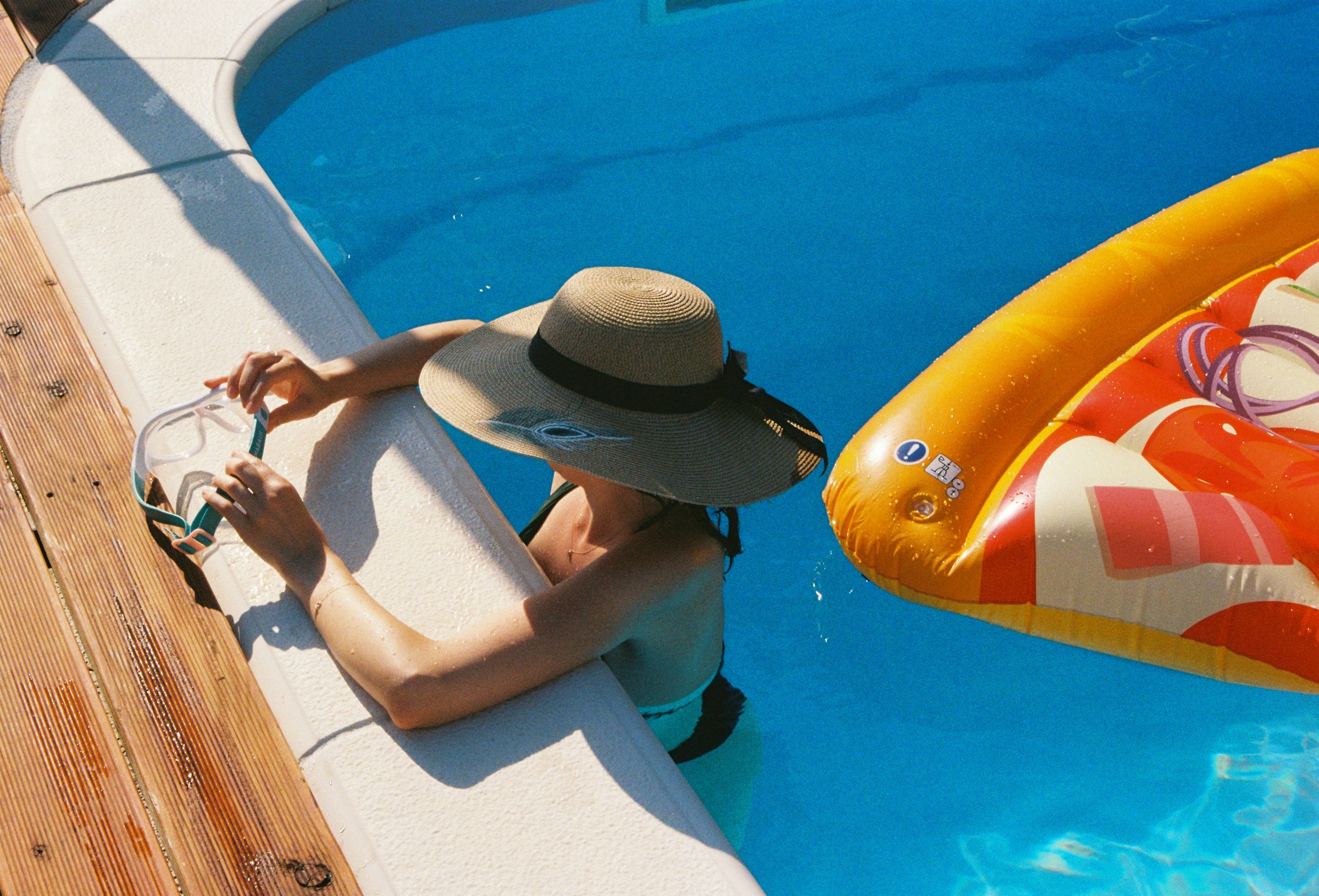As the multitude of vibrant hues of autumn gradually give way to the cold, stark landscapes of winter, one daunting task may loom large in your minds. The task of preparing your beloved backyard oasis, your home swimming pool, for a long-term closure. With the UK weather’s unpredictability, it’s essential to ensure your pool is ready to endure the forthcoming colder months, and possibly even a longer period of hibernation. Fortunately, with careful planning, armed with the right tools and some professional advice, you can ensure your pool is adequately protected from the elements. Read on to discover the crucial steps you need to take to successfully prepare your swimming pool for a long-term closure, and rest assured that with your diligent work, your pool will be ready to dive into when the sun returns.
Evaluating Your Pool’s Current Status
Before you dive headlong into the task of preparing your swimming pool for a long-term closure, it’s vital to assess the current state of your pool. This step includes checking the water chemistry, inspecting the pool’s structure for any damages, and assessing the pool equipment’s condition. Your pool’s present state will significantly influence the steps you’ll need to take to prepare it for closure.
A lire aussi : How can you optimize the placement of return jets to improve water circulation in a UK pool?
A good starting point is to test the water. It’s essential to ensure the pool water’s pH, alkalinity, and calcium hardness levels are within the recommended range. You can use a home test kit for this or hire a local pool professional to do it for you. If the water chemistry is out of balance, it will need to be corrected before you proceed with the closing process.
Similarly, it’s essential to check the pool’s structure, particularly if you have a concrete swimming pool. Look out for cracks, damage to the tiles, or signs of leaks. Any damage should be repaired before closing the pool to prevent further deterioration over the winter.
Dans le meme genre : What are the key design considerations for an infinity pool in a UK coastal home?
Your pool’s equipment, such as the pump, heater, and filtration system, should also be inspected. If you notice any signs of wear and tear, consider consulting a local pool contractor for advice.
Getting the Necessary Permits
In the UK, closing your swimming pool for a long period might require a permit from the local public fund. This permit is necessary for various reasons, including safety, insurance, and compliance with local regulations. The permit application process usually involves filling out a form and paying a fee. The cost can vary depending on your area, but it’s a necessary step that you shouldn’t overlook.
Remember, failing to secure the necessary permit could result in hefty fines or potential legal issues down the line. Therefore, it’s crucial to check with your local authority or council to ensure that you’re following the necessary regulations for pool closure.
Preparing and Cleaning Your Pool
The next important phase of preparing your pool for a long-term closure involves thorough cleaning. This step is crucial, as leaving debris, leaves or algae in the water can stain the pool surface and cause problems when you eventually decide to reopen the pool.
Start by removing any large debris using a pool net and then vacuum the pool floor to remove any smaller particles. You should also clean the pool walls and tiles with a brush to remove any built-up algae or scale.
Cleaning the pool also involves treating the water with chemicals to keep it balanced and prevent algae growth during the closure period. These chemicals usually include a shock treatment, an algaecide, and a winterizing product that helps protect the pool’s surfaces.
Draining and Covering Your Pool
Once your pool is clean and the water is balanced, the next step is to partially drain the pool. It’s essential to reduce the water level to below the skimmer line but not to completely drain the pool, especially if you have a concrete pool, which needs the weight of the water to provide structural support.
After draining, it’s time to cover your pool. A high-quality pool cover provides numerous benefits. It prevents debris and leaves from entering the pool, keeps out pests, and significantly reduces evaporation, helping to maintain the water balance. It’s important that the cover is secure and taut to prevent it from falling into the pool under the weight of accumulated water or snow.
Getting Professional Support
Even though you can take on the task of preparing your pool for a long-term closure, sometimes it’s wise to enlist professional support. Hiring a local pool contractor can be an excellent decision, particularly if you’re unsure about any step in the process or lack the necessary equipment.
Furthermore, by working with a professional, you receive expert advice and can rest assured that your pool is being handled correctly. Remember, the cost of hiring a professional now could save you a considerable amount of money in the long run by preventing potential damage or costly repairs when it’s time to reopen your pool.
Safeguarding Your Pool Equipment
When preparing your swimming pool for a long-term closure, it’s essential to not overlook the pool equipment, such as the pump, filters, and heaters. All these components should be given special attention to ensure they remain in good condition during the period of non-use.
Start by turning off and unplugging all your pool equipment. This is not just a safety measure but also an energy-saving strategy. Once done, you will need to thoroughly cleanse your filters. This should be done by removing the filter cartridges or grids and hosing them down with water. For sand filters, it is recommended to run a backwash cycle.
The next step is to drain the water from your pool pump and filter system. Doing this prevents damage caused by freezing water. Make sure to open all drain plugs on your pump, filter tank, and heater. Don’t forget to also remove any pool accessories such as ladders, diving boards, or pool toys and store them safely.
If you have a pool heater, it’s important to blow it out using a shop vac to remove any water that could potentially freeze and damage the heater from the inside. A local pool contractor will be able to assist you if you do not have the necessary equipment.
Lastly, apply a protective coating or lubricant on the o-rings, gaskets, and any other rubber components in your pool equipment to keep them from drying out or cracking during the winter months.
Putting Your Pool to Bed
After performing all the thorough cleaning, draining, and safeguarding of pool equipment, it’s time to "put your pool to bed" for its long hibernation. This phrase refers to the final steps that will ensure your swimming pool remains safe, clean, and secure during its period of non-use.
First, you will need to install a pool safety cover. This isn’t the average pool cover, but a robust, heavy-duty cover designed to withstand the harsh UK winter. The safety cover will keep out debris, leaves and pests, and also prevent accidental falls into the pool by pets or children.
Next, consider using a winter pool pillow. This inflatable pillow helps to absorb the pressure and weight of the snow and ice to prevent any potential damage to your pool structure. The pillow should be placed in the center of the pool before the cover is installed.
Finally, periodically check on your pool during its closure period. Make sure the cover remains taut and secure and check for signs of any potential problems, like pooled water on the cover or visible damage.
Conclusion
As winter approaches, preparing your swimming pool for a long-term closure may seem like a daunting task. However, with careful planning and a thorough understanding of the process, you can ensure your pool stays in good condition during the colder months. By ensuring the water chemistry is balanced, repairing any structural damages, securing the necessary permits, cleaning and draining the pool, safeguarding the pool equipment, and finally "putting your pool to bed" with a safety cover and winter pillow, you can rest easy knowing your pool is ready for its long hibernation.
Remember, don’t hesitate to enlist the help of a professional pool contractor if you’re unsure of any part of the process or if you lack certain equipment. It’s better to incur a small cost now to safeguard your investment and prevent potential damages that could result in expensive repairs when it’s time to reopen your swimming pool come spring.
















